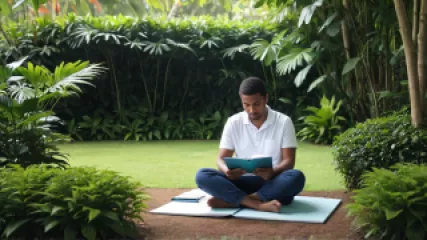How to Use a Mental Health Screening Tool
How to Use a Mental Health Screening Tool
Mental health is an essential aspect of overall well-being, and it's important to regularly check in with ourselves to assess our mental state. One effective way to do this is by using a mental health screening tool. These tools provide valuable insights into our mental health and can help us identify potential areas of concern. In this step-by-step guide, we will walk you through the process of using a mental health screening tool effectively.
Step 1: Choose a Reliable Mental Health Screening Tool
The first step in using a mental health screening tool is selecting the right one for your needs. There are several reputable tools available online that offer reliable assessments. Look for tools that have been developed by mental health professionals and are backed by scientific research. Some popular options include:
- The Patient Health Questionnaire-9 (PHQ-9): This tool assesses symptoms of depression and helps determine the severity of depressive disorders.
- Generalized Anxiety Disorder 7 (GAD-7): GAD-7 is used to assess symptoms of anxiety and measure the severity of generalized anxiety disorder.
- Beck Anxiety Inventory (BAI): BAI is a comprehensive tool that assesses different anxiety symptoms and their severity.
- Kessler Psychological Distress Scale (K10): The K10 is a widely used screening tool that measures psychological distress and identifies individuals at risk of developing mental health disorders.
Choose a tool that aligns with your specific concerns or the symptoms you wish to evaluate. If you're unsure which tool to use, consider consulting with a mental health professional who can provide guidance based on your unique circumstances.
Step 2: Find a Comfortable and Private Environment
Before starting the screening process, find a comfortable and private environment where you can focus without distractions. Creating a safe space will allow you to be more open and honest in your responses, leading to more accurate results.
Ensure that you have enough time set aside to complete the screening without feeling rushed. Mental health screenings require thoughtful consideration, so it's essential to allocate sufficient time for the process.
Step 3: Familiarize Yourself with the Screening Tool
Take a few moments to familiarize yourself with the structure and instructions of the screening tool you've chosen. Read through the questions carefully to ensure you understand what is being asked. Most tools provide clear instructions and guidelines for completing the assessment.
If you come across any terms or concepts that are unfamiliar to you, consider looking them up to gain a better understanding. It's important to approach the screening process with clarity and knowledge.
Step 4: Answer Honestly and Reflect on Your Responses
As you progress through the screening tool, answer each question honestly and to the best of your ability. Remember, there are no right or wrong answers. The purpose of the screening is to provide an accurate reflection of your mental health at the time of assessment.
Take your time with each question and reflect on your responses. Avoid rushing through the screening, as this may lead to inaccurate results. Consider your thoughts, feelings, and behaviors while responding to each item.
Step 5: Interpret the Results
Once you have completed the screening, it's time to interpret the results. Most mental health screening tools provide a scoring system that helps determine the severity of your symptoms or distress levels. The results may indicate whether further evaluation or support is necessary.
It's important to remember that mental health screenings are not diagnostic tools. They provide an initial assessment and can guide you towards seeking professional help if needed. If your results indicate a potential concern, consider reaching out to a mental health professional for a more comprehensive evaluation.
Step 6: Take Action
The final step in using a mental health screening tool is taking action based on the results. If your screening indicates that you may benefit from additional support or intervention, it's crucial to act upon these findings.
There are various options available for seeking help, depending on your specific needs. Consider the following:
- Mental Health Coaching Program: Enroll in a mental health coaching program that offers guidance and support to improve your overall well-being.
- Online Mental Health Consultation: Schedule an online consultation with a mental health professional who can provide personalized advice and recommendations.
- Teletherapy Services: Explore teletherapy services that allow you to receive therapy sessions remotely, providing convenient access to mental health care.
- Virtual Mental Health Assessment: Opt for a virtual mental health assessment conducted by a licensed professional to gain a comprehensive understanding of your mental health status.
Remember, taking action is a proactive step towards prioritizing your mental health and well-being. Reach out for support and utilize the resources available to you.
In conclusion, using a mental health screening tool can be a valuable tool in assessing your mental well-being. By following this step-by-step guide, you can effectively use a screening tool to gain insights into your mental health and take appropriate action if necessary. Remember, these tools should not substitute professional advice, but they can serve as a starting point for seeking further support. Prioritize your mental health by regularly checking in with yourself and seeking help when needed.






